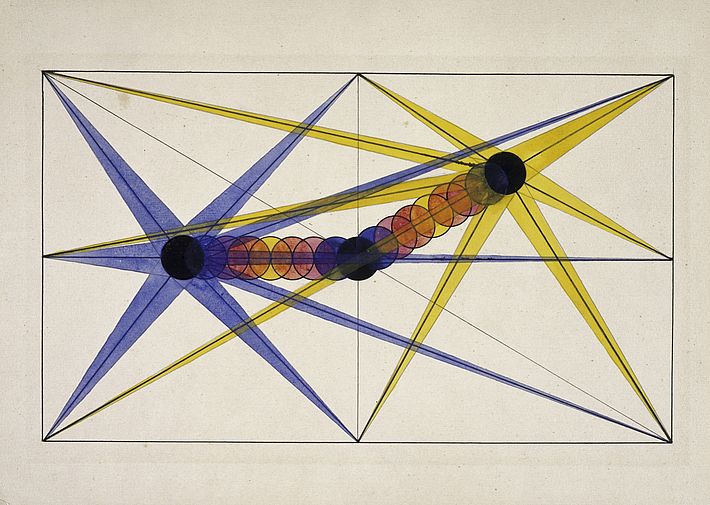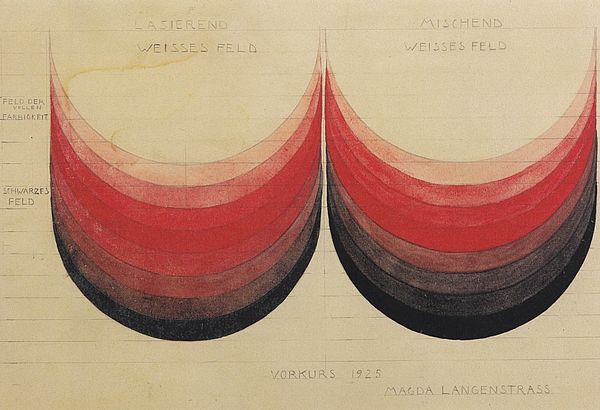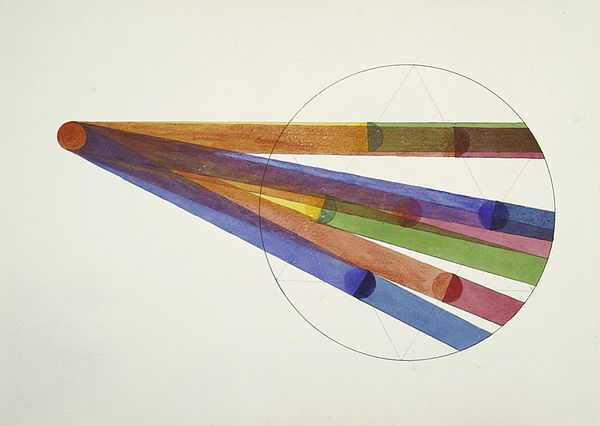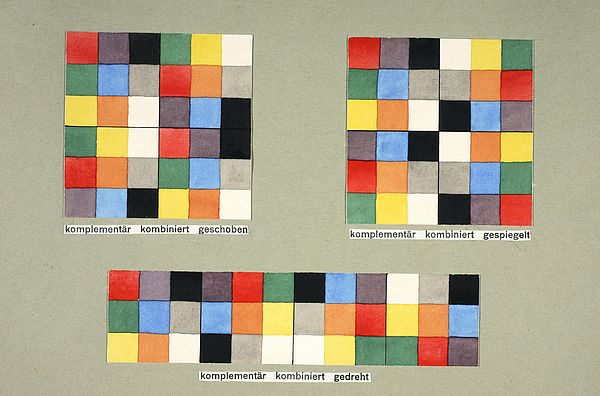Colour and Form Theory
1921–1931
“Art does not reproduce the visible but makes it visible.” This maxim was behind Paul Klee’s personal theory of colour and form, which was a fundamental component of the preliminary course.

Headline
Paul Klee essentially developed his theory of art during his time at the Bauhaus. In 1920, in his book on the theory of art, ‘Creative Confession’, he stated, ‘Art does not reproduce the visible but makes it visible.’ Many other essays and lectures on art education and theory followed, while Klee taught at the Bauhaus: about the study of nature, the creative mindset and form theory. In 1925, the foundations of his design theory were published as the second of the Bauhaus books (‘Pedagogical Sketchbook’). Klee’s colour and form theories were an elementary part of the preliminary course. Their contents reached the majority of Bauhaus students between 1921 and 1931.

Headline
Influenced by the theories of Goethe, Runge, Delacroix and Kandinsky, Klee developed his own colour theory based on a six-part rainbow shaped into a colour wheel. He placed the complementary colours in relation to movements that interact with one another, which shows this theory is based on dynamic transitions. For Klee, because art and theory were inseparably linked, the element of movement flowed into the compositions of his colour gradations and Quadrat (square) paintings.

Headline
In the nine lessons of his form theory, Klee explored works of art with regard to ‘the stages of [their] creation’. The point that sets itself in motion stood at the beginning of his considerations and the movement of colour as part of this process at their conclusion. As a master of form, Klee was initially the head of the bookbinding workshop. Due to his experiences with reverse painting on glass, he subsequently became the head of the glass-painting workshop. From 1923, he was head of the course Elementary design theory of surfaces for the second semester. At times, he also taught life drawing. In Dessau, from 1926, Klee taught a painting class at his own request. In 1927, he also taught form theory in the weaving workshop after the departure of Georg Muche, where he taught his colour theory and gave lessons on the design of surfaces. His teaching aspired to the ‘development of multiplicity into unity’. Klee’s influence on the expression of form in the weaving workshop played a large role in shaping this workshop.
In his approach to art, Klee attempted to avoid dogma of all kinds. He aimed to teach the foundations of colour and form to the students so that they could continue to work with these elements on an individual basis. There were no difficult discussions about radical life concepts of the sort entertained by Johannes Itten, because Klee always strove for harmony. Due to his pleasant but profound way of imparting knowledge, he was known at the Bauhaus as the ‘magician’.
